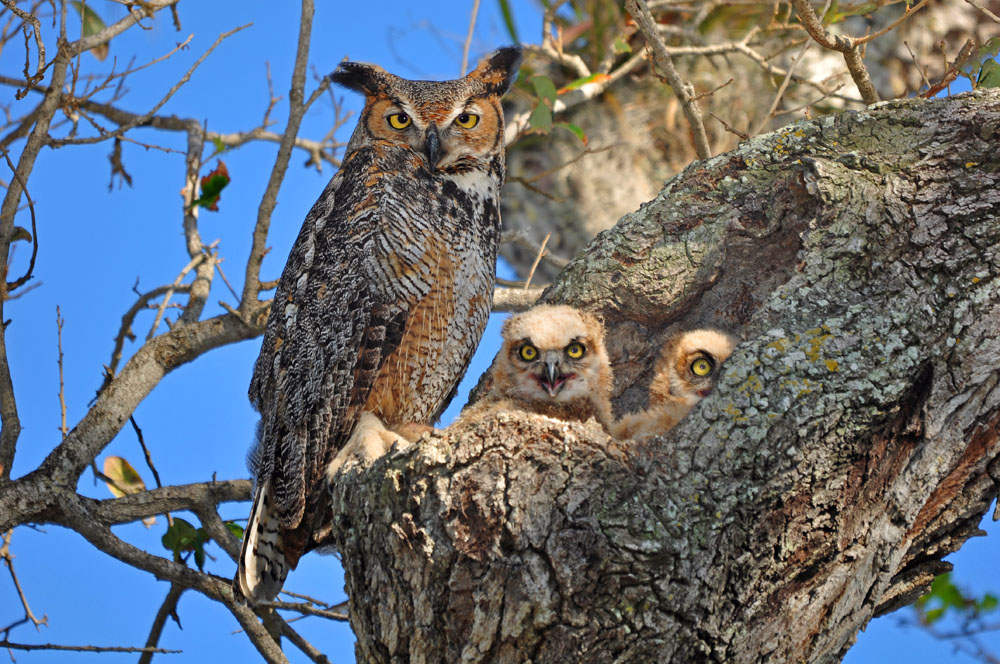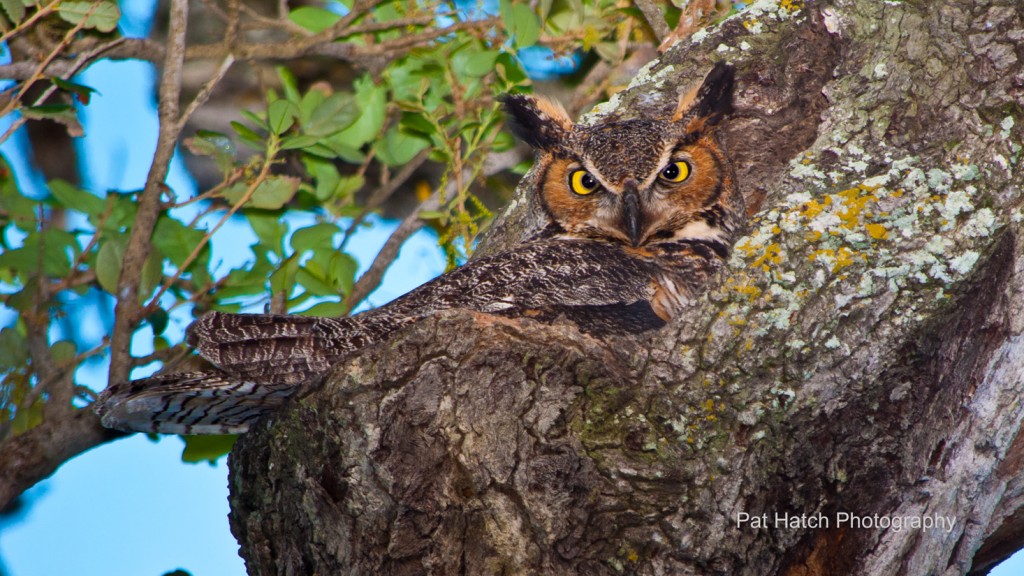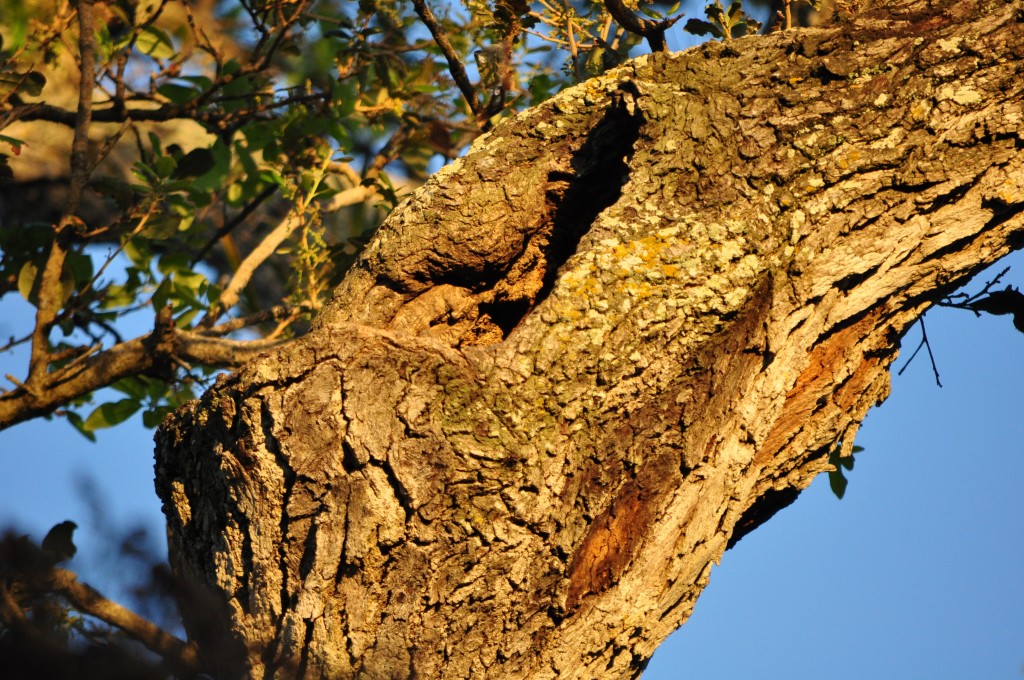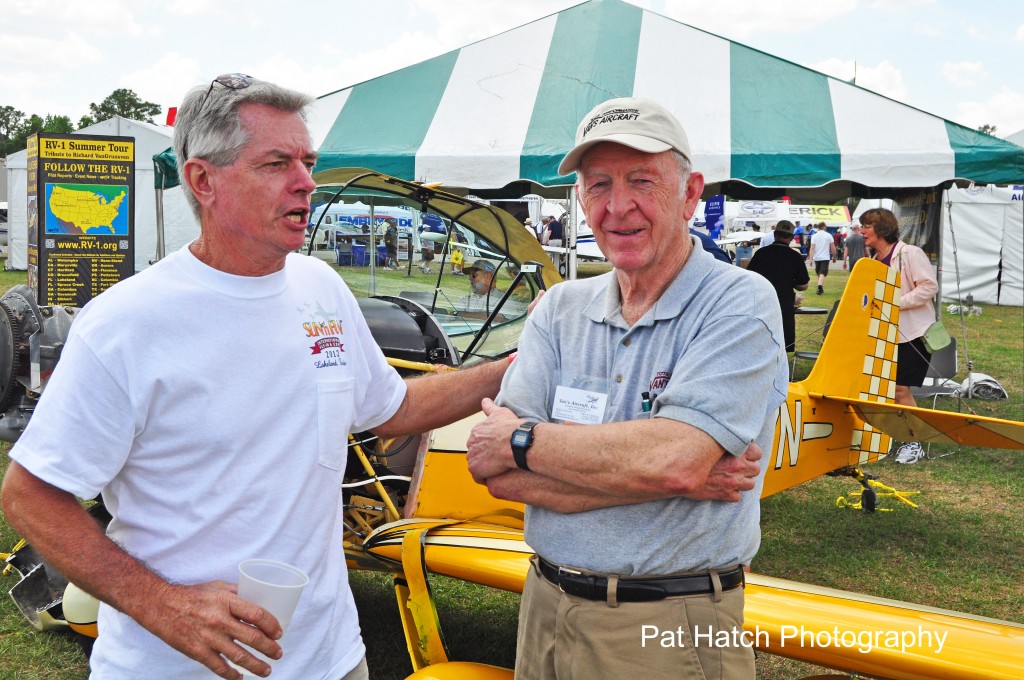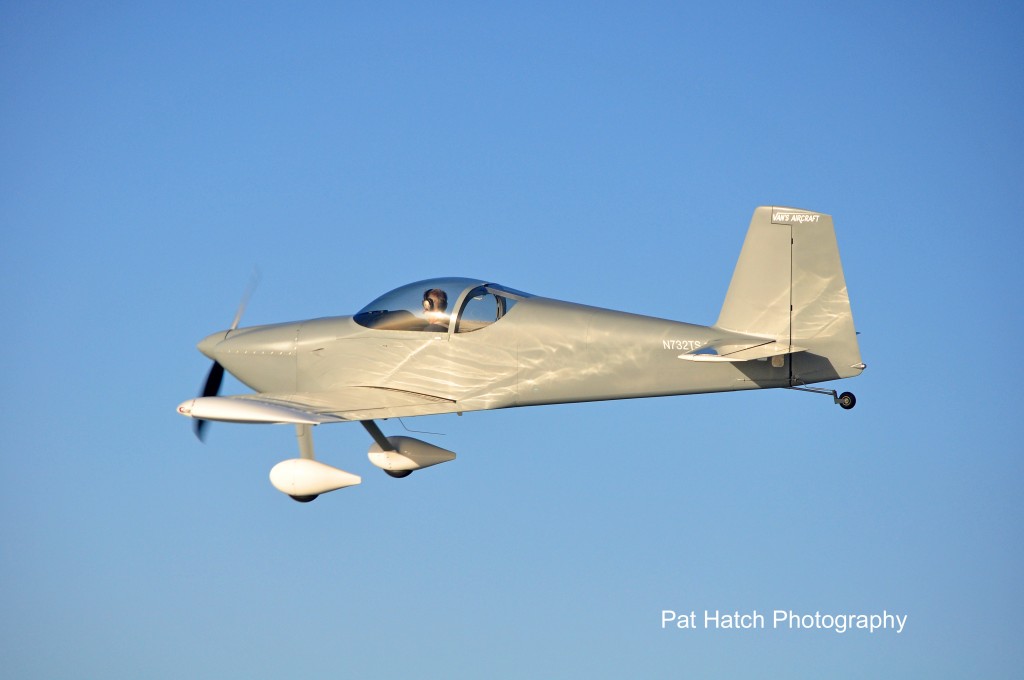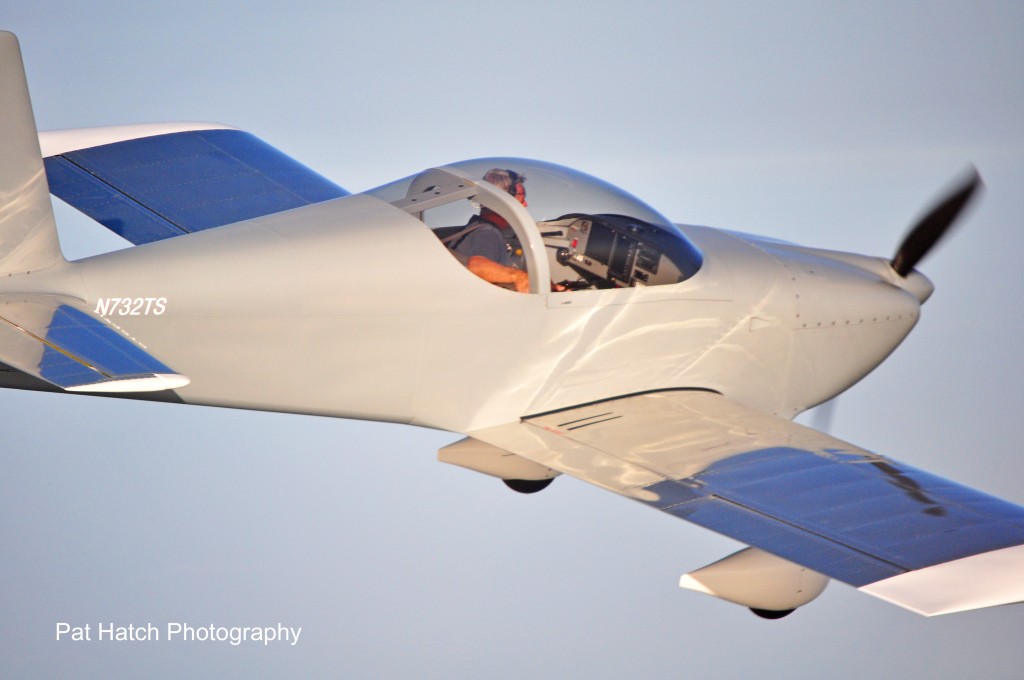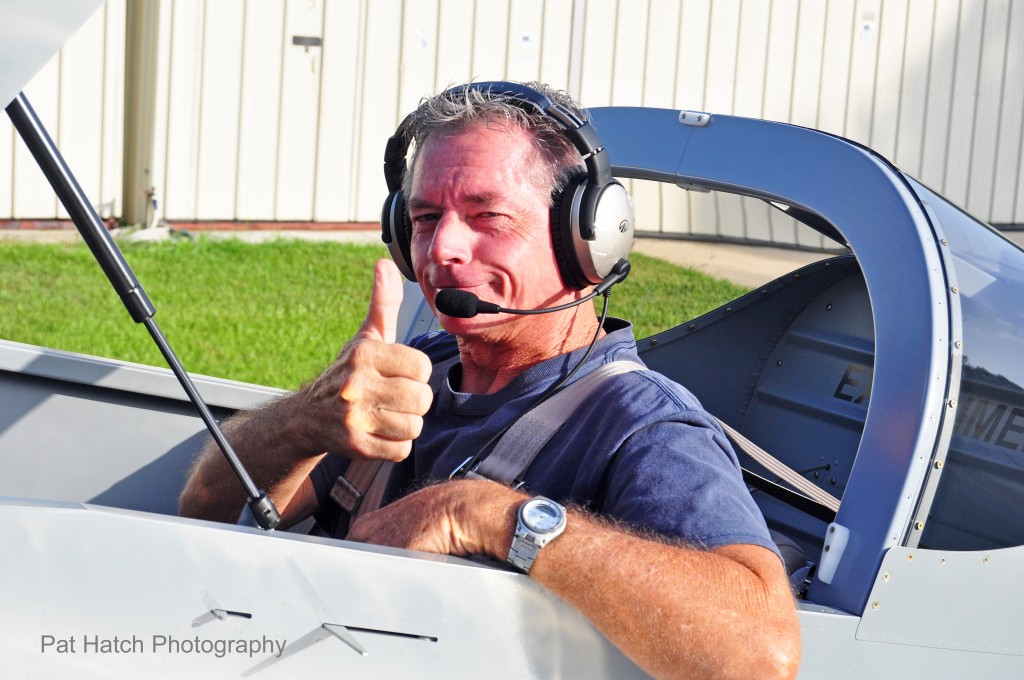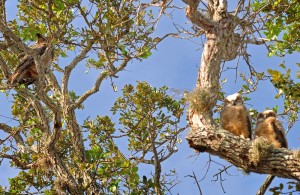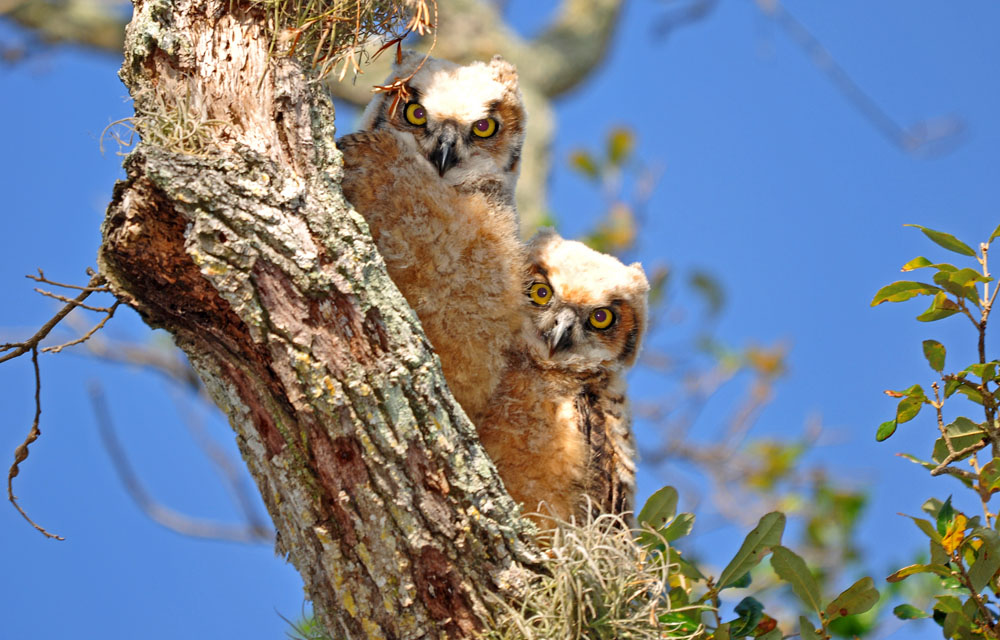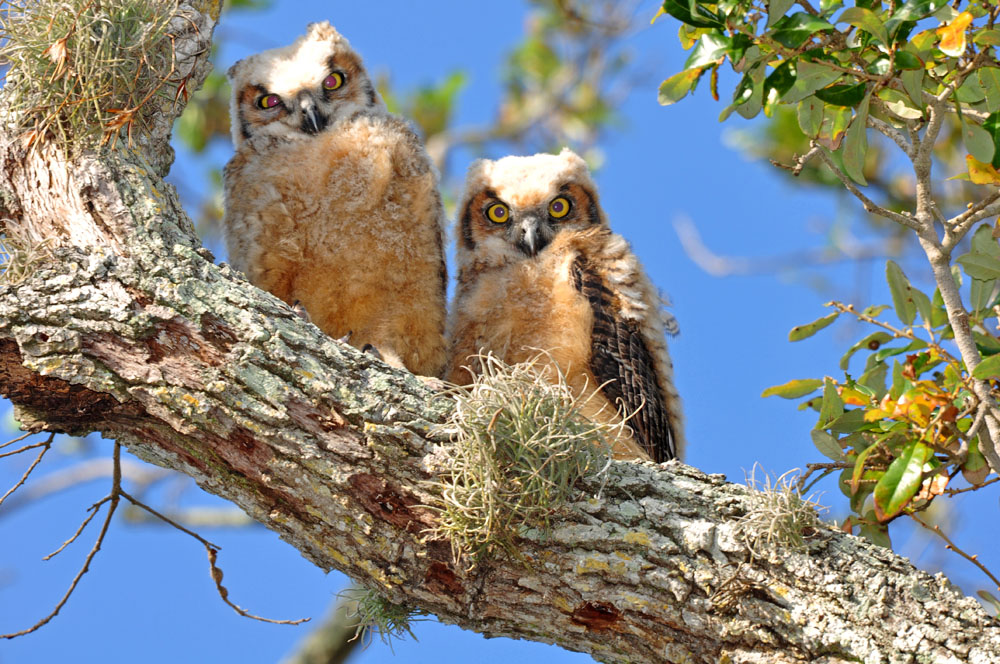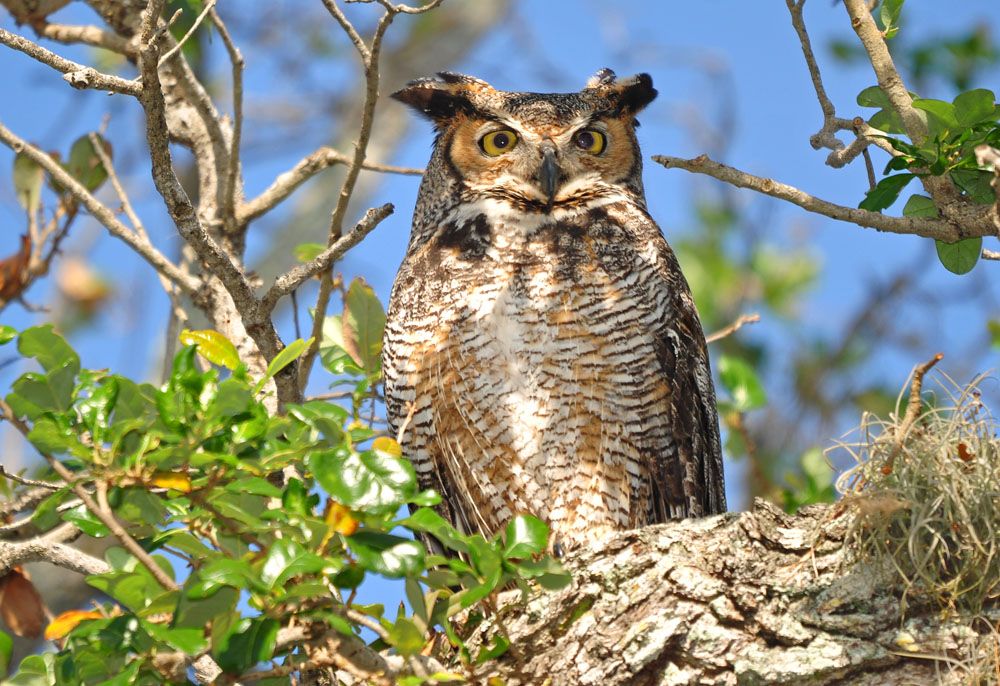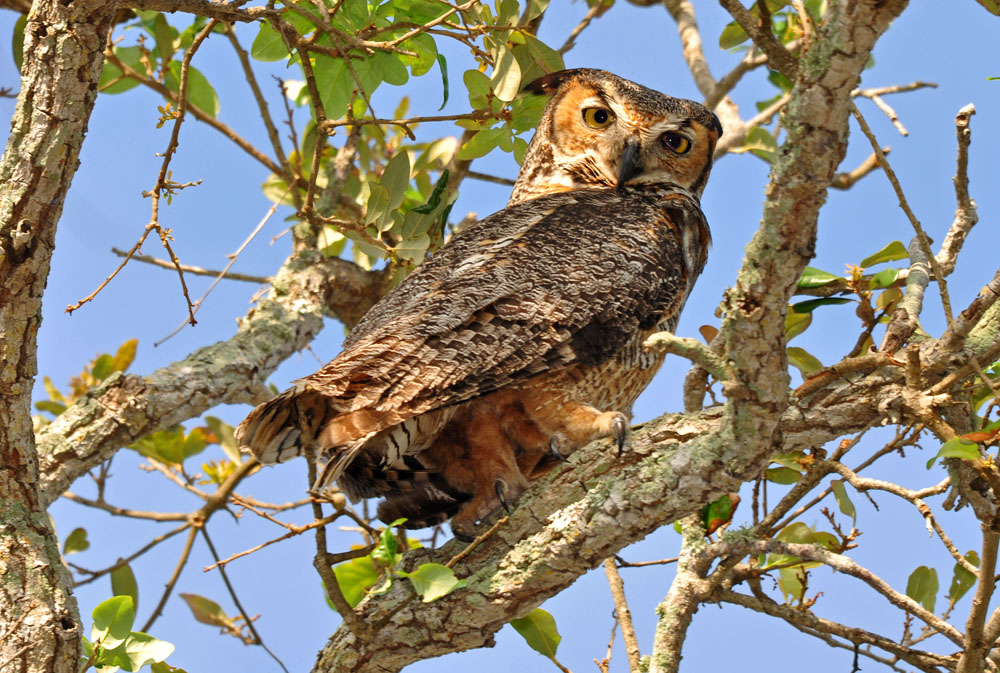Female Great Horned Owl
Not much going on this evening. Just mom sitting on her eggs. She looked very relaxed and tranquil as if she is near the end of her long wait. The male was not around, at least I couldn't see him.
This was taken in RAW at 300mm, 1/200 sec., f/6.3, ISO 800. The light was very good at a little after 5 p.m. and about 20 minutes before sunset. There were clouds in the west which tended to diffuse the light—I used a little flash fill via the Better Beamer, about 3 stops below ambient. I use the SB-600 flash in manual and adjust the strobe until the image on the monitor looks about right. Final adjustments made in Photoshop. Click on the image for the large version.
Male Great Horned Owl
The owls are back in the oak tree near where I live. The female has been sitting on her eggs for about a month now. Still no sign of any chicks—could be any day. I was observing the hollow in the oak tree today that serves as the owl nest. Time was about 5:30 p.m.
As is usual this time of day, the female leaves her nest for about a half hour or more to feed herself. After the chicks are born, she often brings food back when she returns to the nest. I think one of the reasons she leaves is to allow a cooling-off period for the eggs, a natural and beneficial part of the incubation process. Research has shown that mimicking this cooling off period during artificial incubation improves the hatch rates.
While the female is absent, the male is always close by keeping a watch on things. Today was no exception. Here the male is in an adjacent oak tree about 150 feet away from the nest tree. He let me get fairly close to him as I took this photo—I was about 100 feet away hiding behind another tree trunk that supported the camera and long lens. The camera is a Nikon D90 with 55-300mm telezoom. Flash fill was incorporated to remove the shadows present because of the late hour—about 20 minutes prior to sunset. Taken at 1/200 sec. and f/6.2, ISO 800. I took several shots and he never took his eyes off of me.
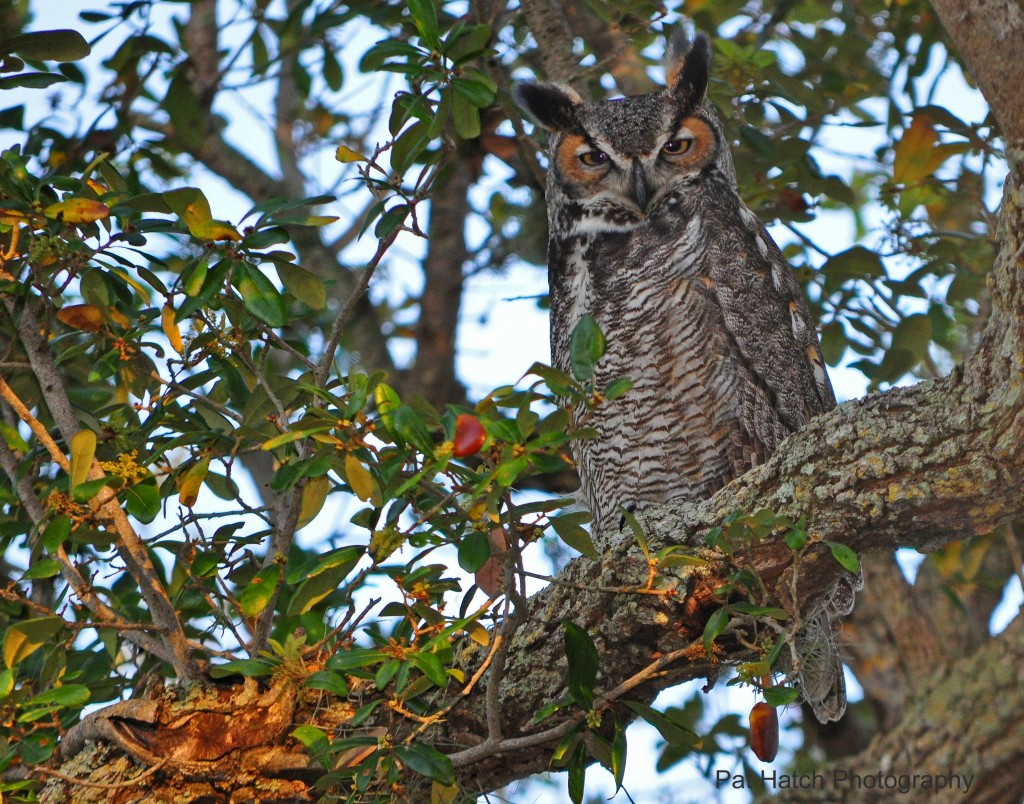
The male is quite distinct from the female--taller and grayer, the female larger, plumper and browner.
Stay tuned because things should develop rapidly now. I'll put up some photos of the chicks as soon as they emerge.
Tom Savrda’s RV-7 First Flight
Well, actually today was his second flight, but since the first flight on July 22nd was cut short by an erroneous oil temperature indication, I consider his "official" first flight was today.
The oil temperature indication on his first flight was almost 300°F, but since his oil pressure was a very strong 90 psi, it was obvious that it was a calibration problem with his cockpit gauge. We had just gotten airborne and I was joining up on his wing with my RV-6 when he mentioned the high oil temperature. So we decided to make a precautionary landing and investigate the problem. And as it turned out, the problem was indeed a calibration issue and was quickly resolved. We had also inserted an accurate temperature sensor into his oil sump through the filler tube and measured the temperature to be around 195°F (very normal) right after landing, so that just confirmed that the temperature indication was indeed erroneous. Flight time was only 11 minutes because of the oil temp problem.
So today was the day. Tom wanted to get a solid hour of flight in today using high power settings—the standard way to break in a new engine.
We taxiied out to runway 4 at Vero Beach and departed in tandem, Tom first. With Tom having to use maximum power for break-in purposes, I needed to use a turning rejoin to be able to catch him. For the non-pilots, the only way to catch a faster airplane is to keep the radius of your turn less than the airplane out front. It becomes a geometry problem to comprehend how this works, just know that it does. So soon I was on his wing, but it was taking full power to stay with him, which I was able to do—barely.
Flying in formation is a skill that is acquired. It is not easy, but becomes second nature with training and experience. Now, try flying in formation using full power while continuously having to do a turning rejoin just to stay in position, at the same time snapping decent photographs with one hand while clearing for other aircraft. Not easy. Don't try this at home. Safety is paramount always, so I don't recommend doing this; however, my safety pilot decided to go play at the big fly-in at Oshkosh and left me high and dry. Needless to say the photography was very limited, but we managed to get a few decent shots. I used a 55-200mm telephoto zoom for these shots, which allowed me to move out to an extended formation position while shooting.
It was another hazy day down low today (more Sahara dust in the air) so ground shots were impossible. We were at 6,500 feet for these photos:
And finally, the obligatory "RV grin" shot, whose purpose is to capture and celebrate the exhilarating feeling one experiences at the end of the first successful flight of an airplane you built yourself.
You are probably never going to see a nicer built RV-7. This is certainly the best one I've ever seen in terms of the outright craftsmanship and attention to detail. Proof of this is that the airplane flew straight, no heavy wing, no right rudder required in cruise! You really need to go around and inspect closely to see the outstanding fit and finish of this airplane. Oh, and the engine performed flawlessly—there were no leaks at all after the flight. Not a single squawk.
Nice job, Tom!
And Then There Were Two
I think I can safely say there are only two surviving hatchlings. I'm not sure what happened to #3, but I suspect it had some kind of problem and perished. No sign of a carcass anywhere, though. So this was the scenario today when I arrived at the oak tree: mom up high and above the two "branchers" (as they are officially called now that they have ventured out of the nest).
The owls were just too far apart to get them all in focus in this shot. I went to as high an f-stop as I could with the slowest shutter speed, but the 400mm focal length just did not allow for a great enough depth of field. But I put it up just to give an idea of the general layout of the owl family in the oak tree. Here are the two babies up close:
And another one:
And a couple more of mom:
I was using the "Better Beamer" flash attachment today and it really fills the shadows nicely. The sun was pretty high in the sky and there were a lot of shadows. The Better Beamer really lights up the owl's retinas and that's why the pupils appear reddish in places. In a couple of cases it was so intense that I had to Photoshop the "red-eye" completely out.
Owl Update
Here's today's submission. The babies are getting bigger. Don't know where #3 was today, perhaps napping. Still haven't gotten all three hatchlings together yet.